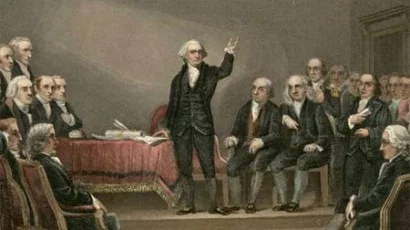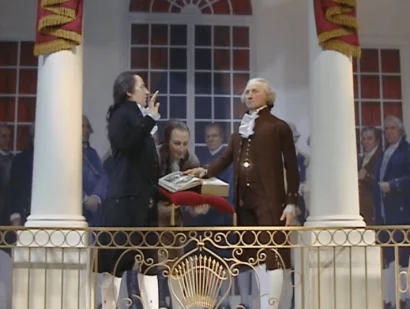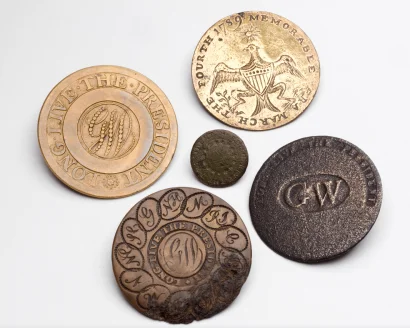
Amongst George Washington's contributions to the burgeoning American Republic included presiding over the Philadelphia Constitutional Convention, leading to the completion and signing of the Constitution by the delegates on September 17, 1787. However, that early autumn day signaled only the beginning of the struggle to form a workable government. With Washington's wish fulfilled in Philadelphia, it was up to the states to accept the document as the official charter of the American government.
While Washington did not stray far from Mount Vernon during the ratification period, he remained informed of each state's ratifying conventions through newspaper accounts and correspondence with supporters of the Constitution such as James Madison and Alexander Hamilton.
On December 7, 1787, Delaware became the first state to ratify. Six months later on June 21, 1788, New Hampshire voted for ratification, the ninth and deciding state to do so. On September 13, 1788, the Confederation Congress chose New York City as the temporary capital of the United States. Within a month, the Congress constructed a schedule for election of the new Representatives and Senators as well as the presidential electors.
The states' electors voted for President on February 4, 1789. On March 4, the date that the new Constitution took effect, the First Federal Congress assembled in New York's recently re-named and refurbished Federal Hall. Since Congress had not yet received a quorum and would not until April 6, the votes could not be officially counted. It was generally known that George Washington had achieved a unanimous victory, though the retired general was not so certain that he desired one. However, when Secretary of Congress Charles Thomson arrived at Mount Vernon on April 14, 1789, with the official results, Washington put aside his private feelings and sentiments, writing a formal letter of acceptance to Senate president pro tempore John Langdon.
![Washington's reception on the bridge at Trenton, on his way to his first inauguration. Engraved by Thomas Kelly, c. 1823-1835. Library of Congress call number PR 13 CN 1975:071, p. 129 [P&P]](https://mtv-drupal-assets.s3.amazonaws.com/files/resources/inauguration.jpg?VersionId=XL8PP62DMwDqoCLizZhjpUzsV4Wp.oes)
The eight-day trip from Mount Vernon to New York lasted from April 16 through the 23, and was a triumphal march through six states. Grand public celebrations were held in Alexandria, Baltimore, Wilmington, Philadelphia, Trenton, and New York. In addition, parades, dinners, and addresses in several small towns along the route created a national climate of gratitude and admiration for Washington. The thousands of citizens who lined the road to New York welcomed a strength and purpose to the administration of their new government.
The journey to the presidency ended at Federal Hall on April 30, 1789, the first inauguration day. Washington was sworn in by Chancellor Robert Livingston. President Washington also took the first steps towards a new goal. In his inaugural address he declared that the preservation of the sacred fire of liberty and the destiny of the Republican model of government were deeply and finally staked on the experiment entrusted to the hands of the American people.
Bibliography:
The Papers of George Washington Digital Edition, ed. Theodore J. Crackel, et al, Charlottesville: University of Virginia Press, Rotunda, 2007-.
Bernstein, Richard B. with Kym S. Rice. Are We To Be A Nation?. Cambridge, Massachusetts: Harvard University Press, 1987.




![George Washington intentionally did not sit for this presidential era portrait while wearing military attire. He wanted to emphasize the Office of the President's civilian nature. - George Washington, Gilbert Stuart, ca. 1796. [NPG.2001.13]. Courtesy National Portrait Gallery, Smithsonian Institution.](https://mtv-main-assets.mountvernon.org/files/styles/callout_block/s3/resources/gilbert_stuart_george_washington_lansdowne_portrai.jpg.webp?VersionId=2S9AVDhtsMpruP7dLRQ3TSZRmeQHCadn&itok=OUkV01mM)